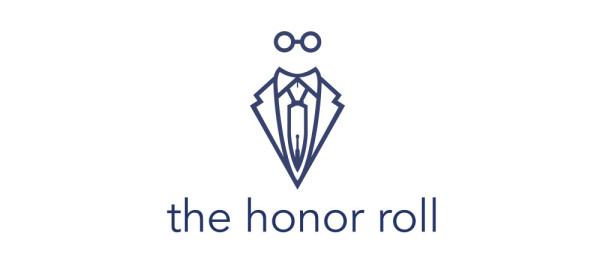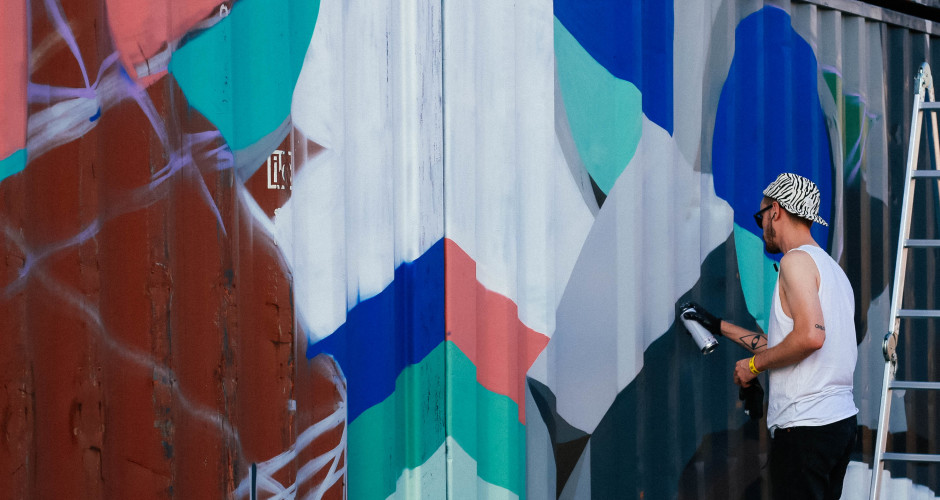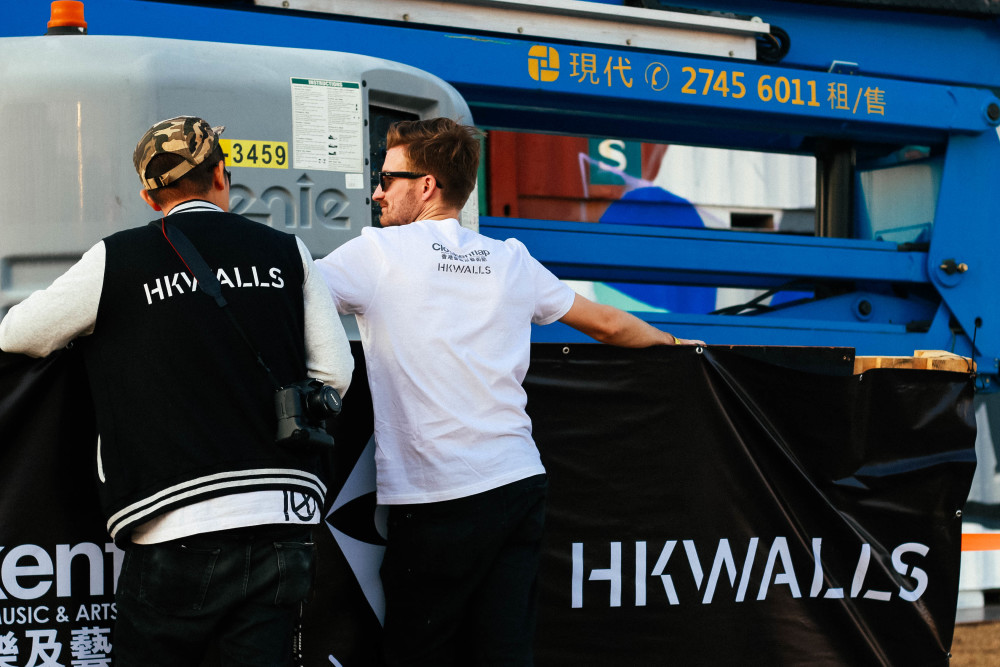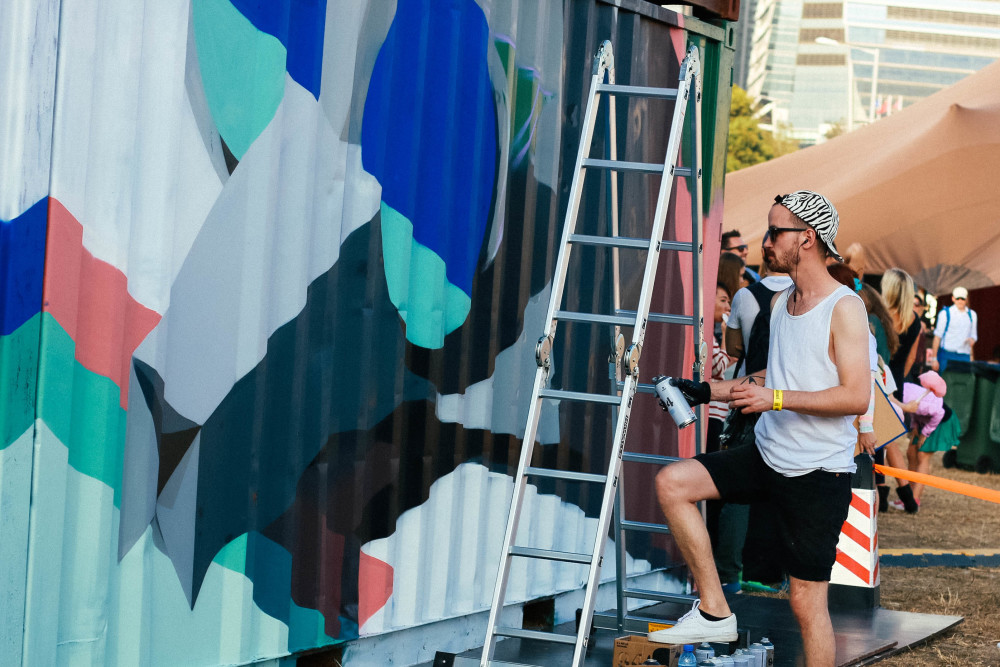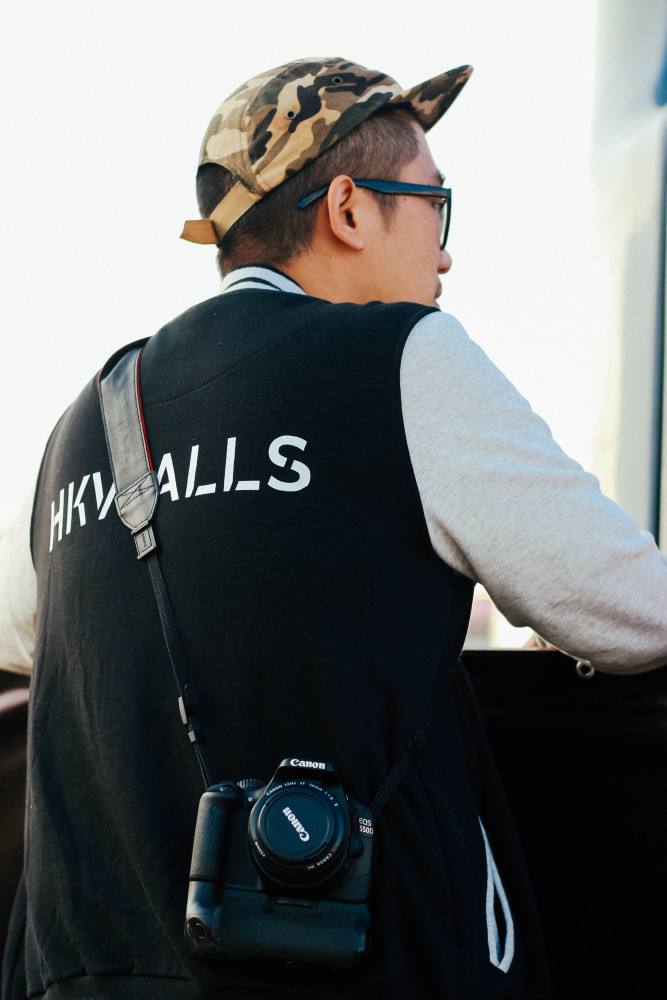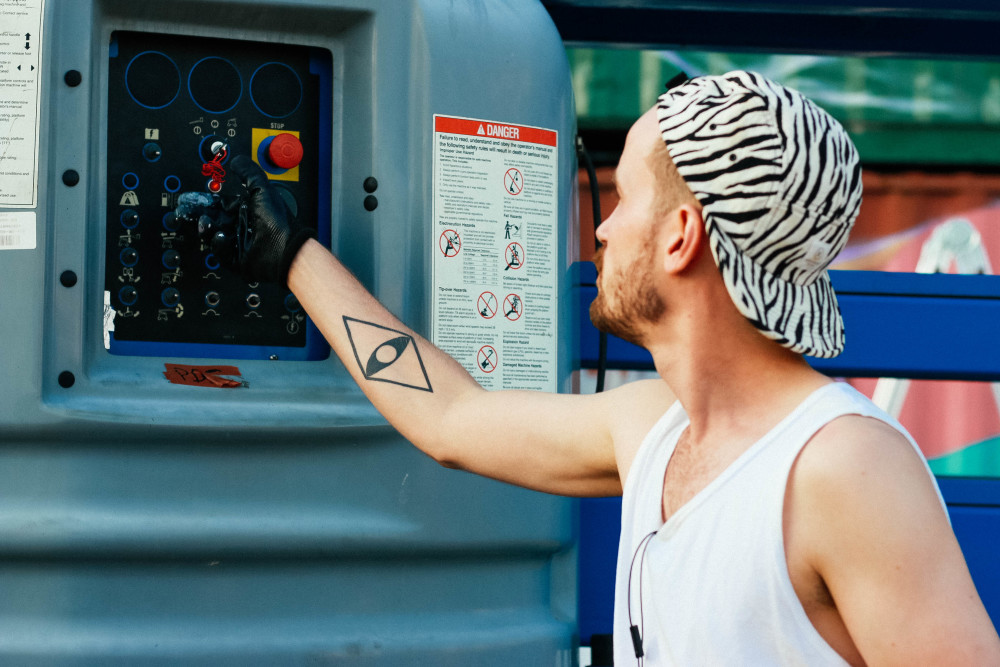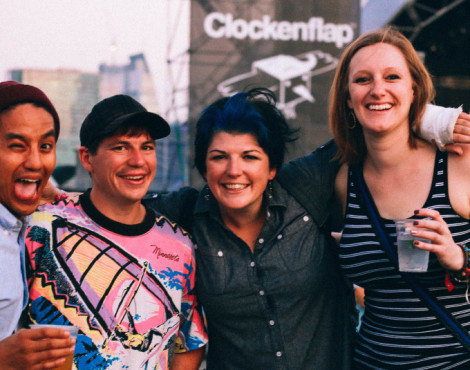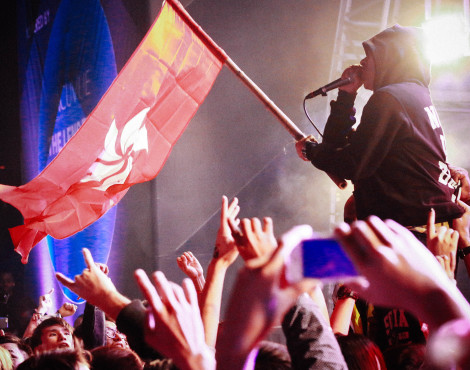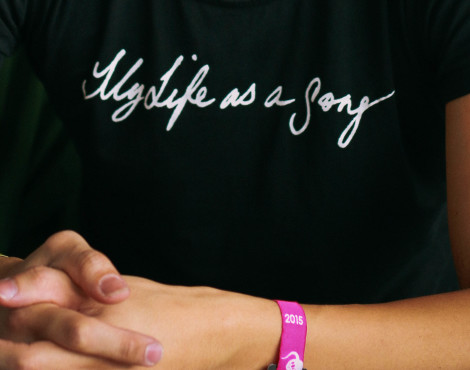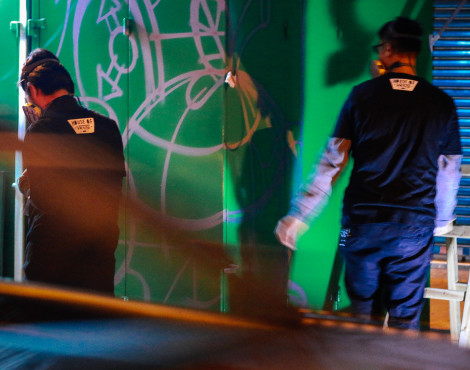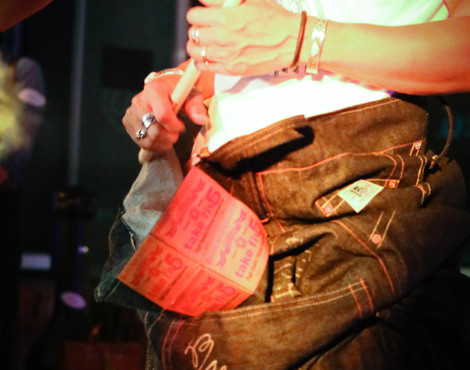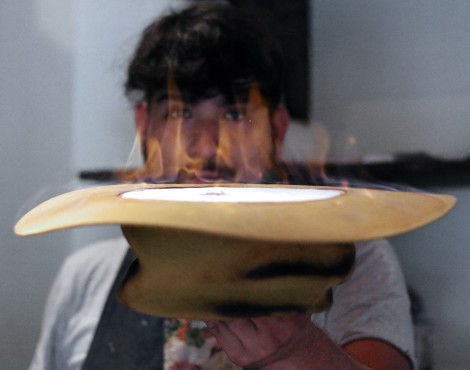In between the main stage and the rest of the festival grounds, Clockenflappers must cross a grated steel footbridge. Back turned to the Central skyline, as you descend the end of the bridge four shipping containers are stacked two by two ahead. Upon this makeshift canvas lay the outlines of a large mural, currently indeterminable. Aerosol cans hiss and spurt morse code against a rumbling loudspeaker. Colors and lines take shape.
In a black and white letterman jacket, Stan Wu, co-founder of HKwalls, watches on, snapping pictures and explaining the work in progress to passers by.
Christopher Tuazon: What is HKwalls?
Stan Wu: HKwalls is an annual event in which we choose a district in Hong Kong, and we ask local and foreign artists to paint over public spaces within a weekend or two. In between that main event, we do smaller ones like this. These guys, Low Bros, came from Germany, and we flew them here this weekend to share some fresh ideas with the audience.
We want to bring more art that we love — street art, graffiti, exterior, urban, whatever you want to call it — to Hong Kong, because it’s dead right now.
CT: Was there a time when it was really alive?
SW: There’s only a month out of the year where people really talk about art here: Art Basel. From Miami’s, we saw block parties, good vibes, people having a good time.
Out here, it’s straight up Wanchai Convention Centre. Ballers just go in and out. We wanted to make something around it that people would love to check out. So we teamed up the whole weekend had thirty people painting in Sheung Wan. We just wanted to create. Something that’s not just cheese and wine. We want to cultivate the culture so we can make more noise, more awareness out of this city, and not just in March.
CT: Is HKwalls’ concept graffiti-based?
SW: It started that way, but we’ve merged with different types of artists. We recently teamed up with tattoo artists, who put their art on the walls. We want to work with different types of creativity: photography, videography, and even yourself. We can figure out something to jam and make something cool together.
CT: So basically, you’re making a community?
SW: It’s kind of here already, but it’s loose. We want to make it more solid, with fresh ideas to put into HK. We love this city; we’re from here, and we want to build something here.
CT: Are you born and bred Hong Kong?
SW: Sha Tin.
CT: How did you get into wall art?
SW: In high school, there was this wall of fame there. People could put up art without bothering anyone. I didn’t even know it was “graffiti” back then.
CT: Do you remember what you did?
SW: It was some stupid-ass Chinese characters, hella dumb. It’s not something I regret, but definitely not something I’d appreciate right now!
CT: Coming from the US, where I was a wannabe bboy, I was exposed to Beat Street, and tagging on subways and shit. How would you describe the HK graffiti scene?
SW: Let’s talk about Asia: it’s less rooted. What you guys have in the US, it’s like three or four decades of a foundation built. Even if you don’t do graffiti, you can understand the culture. So imagine it like anything else; without that foundation, everything could be very inspired when you make something in your own way, but there’s no core. I get asked a lot, “What do you feel about HK style? What is it right now?” I can’t really answer that. It’s a mix of everything.
CT: It’s kind of like Hong Kong itself.
SW: Yeah. Like you said about New York: train culture, bombing, tagging. What’s the West Coast: a lot of script and Latino influences. Hong Kong? Everything comes from the Internet era.
CT: Is that more of a gift or curse for you guys?
SW: I’d say both. One good thing is that there’s less beef. There’s less politics. There’s less old school talk. But at the same time, we need old school talk to actually build up a better understanding.
CT: Is one of your goals to create a HK identity?
SW: We’re not trying to force it, but if it happens, it happens. It’s not something we focus on, but it’s a place we wish to get at.
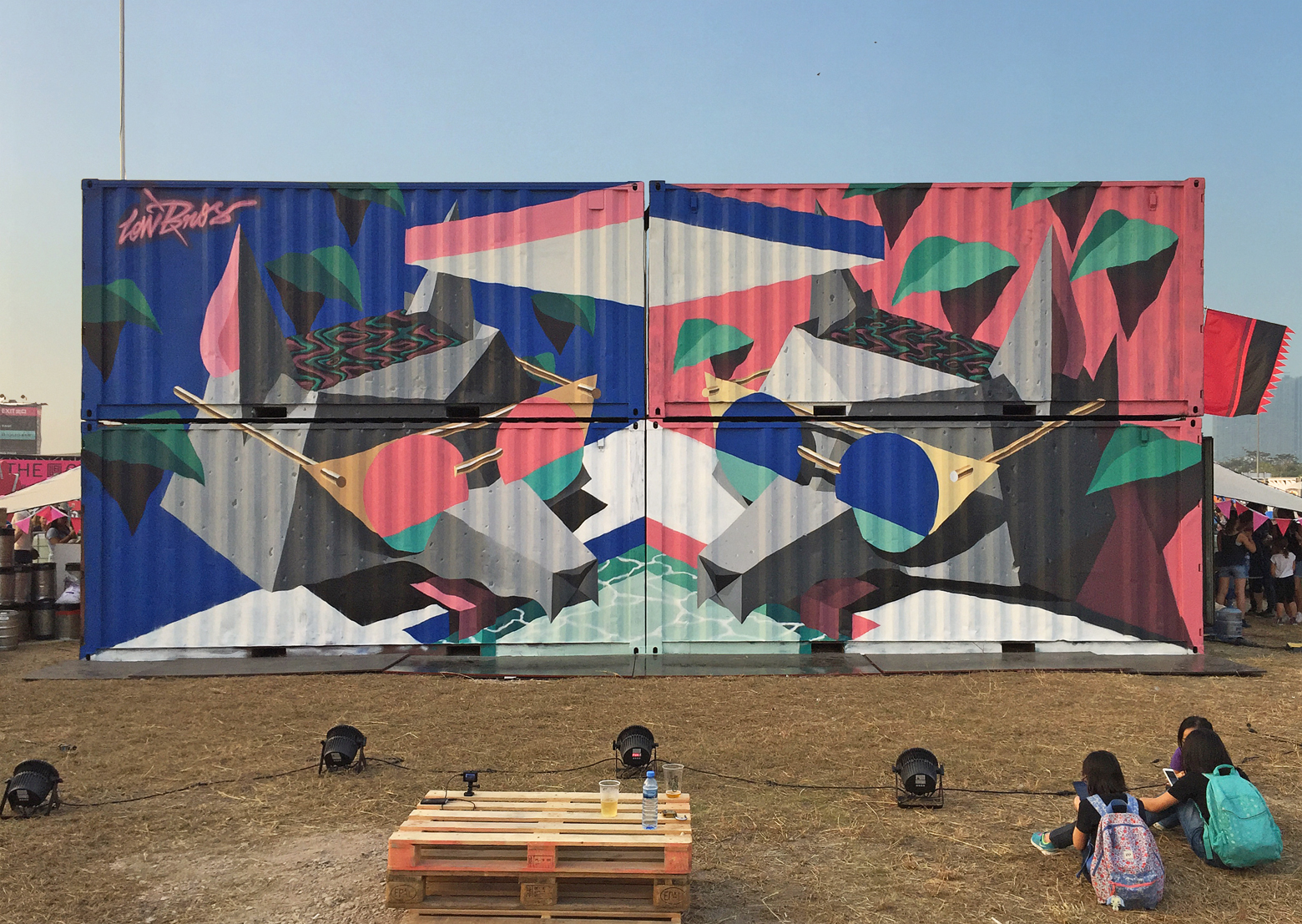
HKwalls
